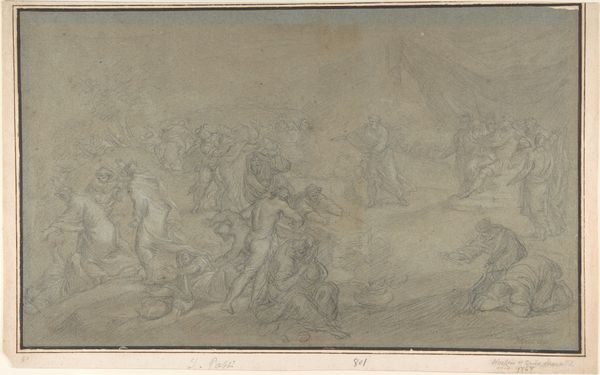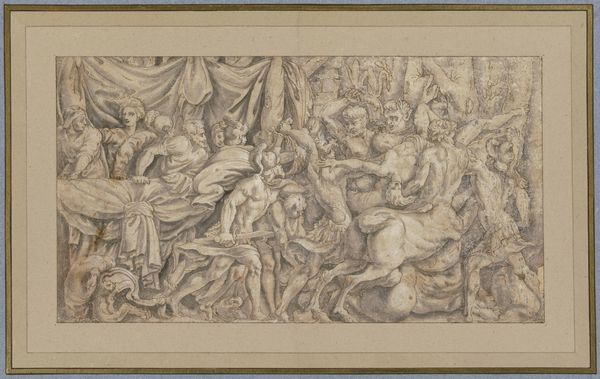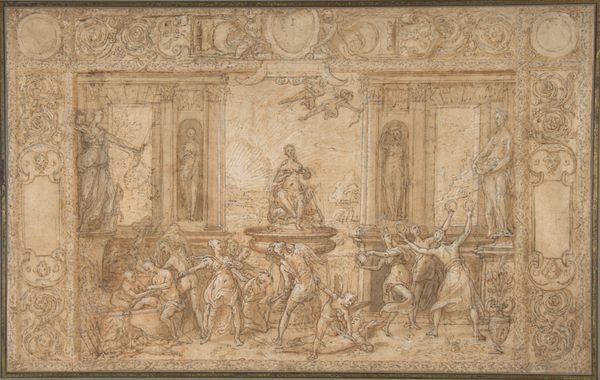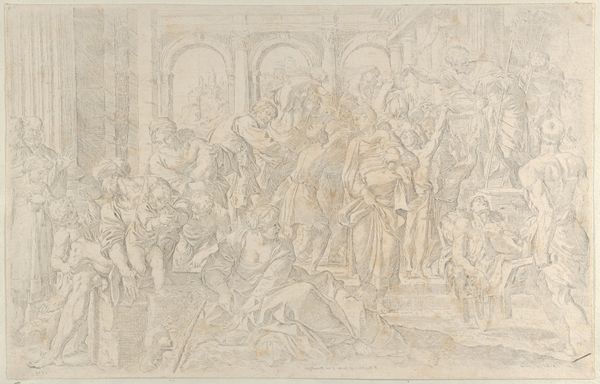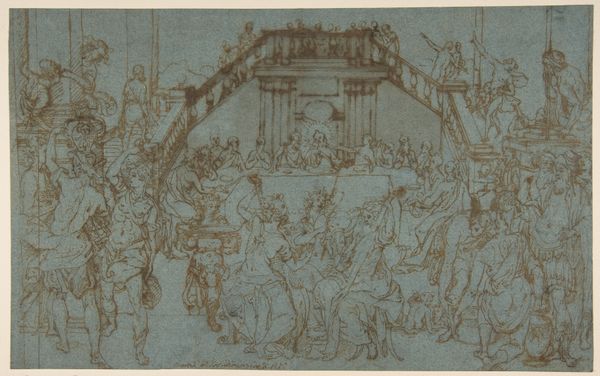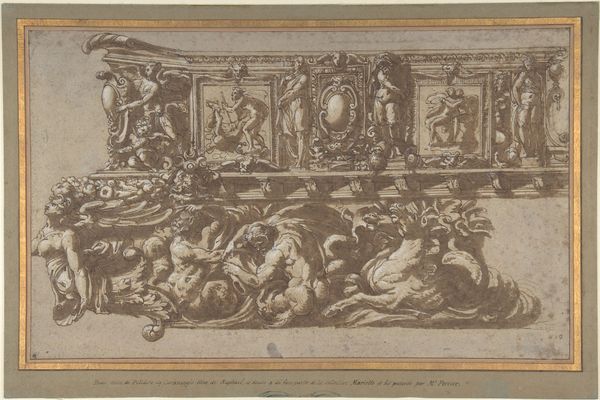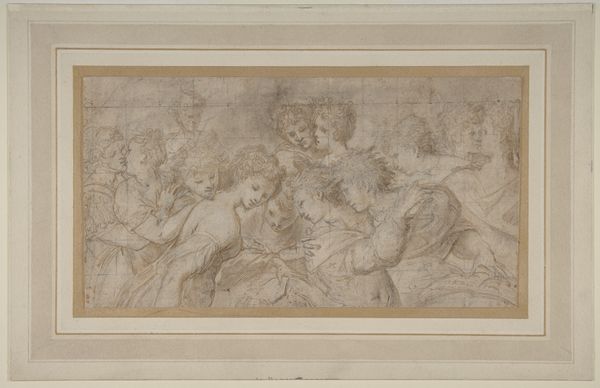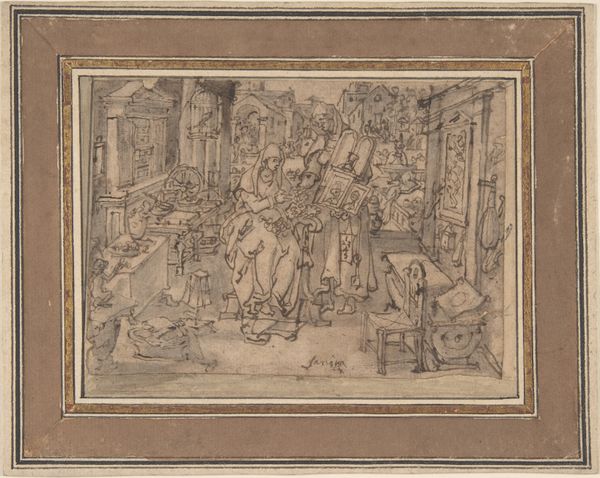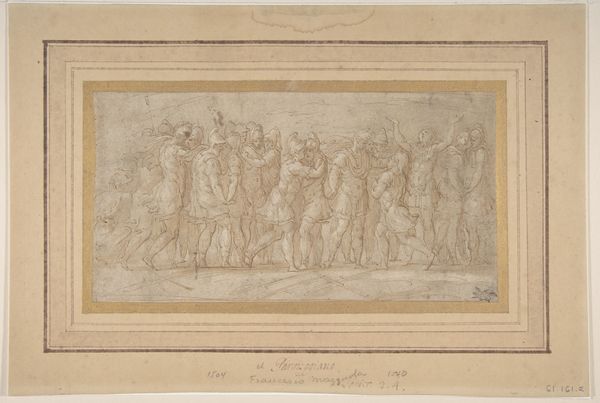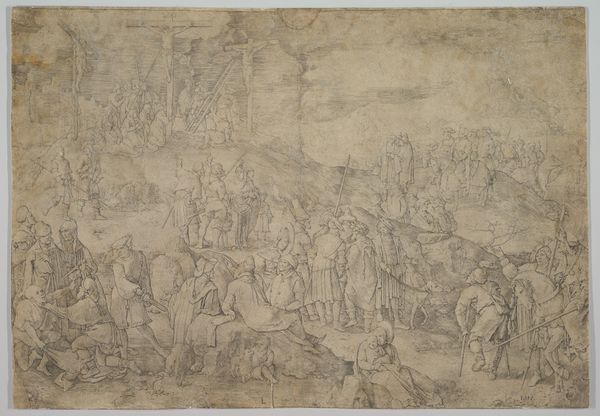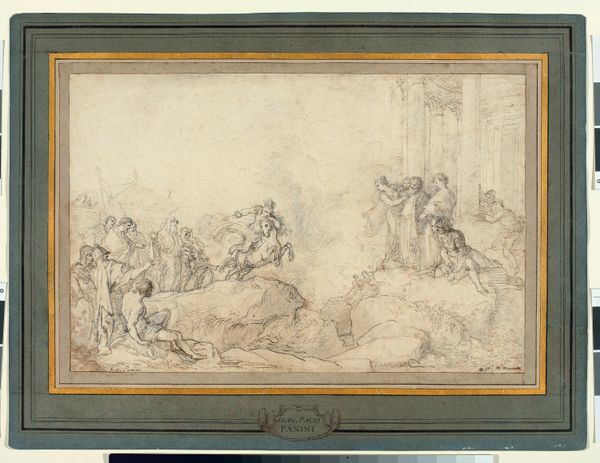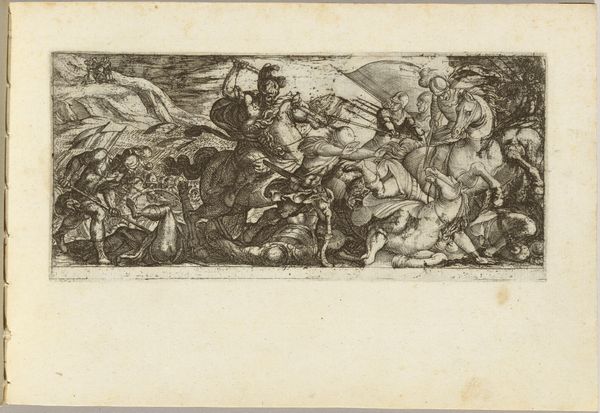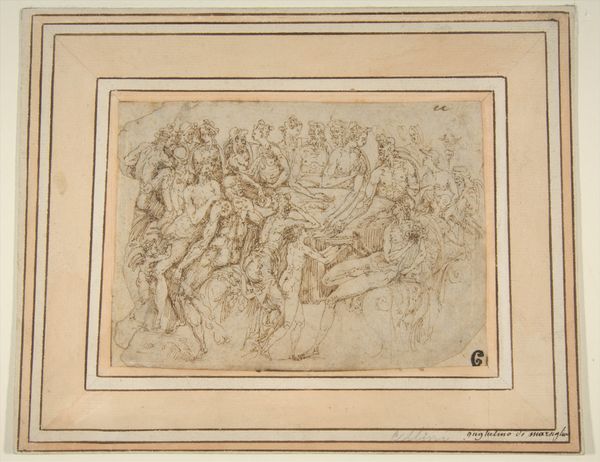
Cassandra preventing Deiphobe from killing Paris 1500 - 1565
0:00
0:00
drawing, print, charcoal, engraving
#
drawing
#
toned paper
# print
#
figuration
#
11_renaissance
#
charcoal art
#
charcoal
#
history-painting
#
northern-renaissance
#
engraving
Dimensions: 3 9/16 x 13 7/8 in. (9 x 35.2 cm)
Copyright: Public Domain
Editor: So, here we have "Cassandra preventing Deiphobe from killing Paris," created sometime between 1500 and 1565 by Jean Cousin the Elder. It's a charcoal engraving on toned paper, and the composition is just packed with figures. I find it quite dramatic and chaotic. What historical narratives are at play here? Curator: It's certainly a dynamic scene. Focusing on its creation in the 16th century, what does a history painting like this one communicate to its viewers, in a socio-political context? Think about the intended audience. These kinds of prints helped spread classical narratives, solidifying shared cultural values among elites, and reinforced contemporary societal norms. Editor: So it's less about historical accuracy, and more about shaping cultural understanding? I hadn’t thought about the audience consuming this after it was made. Curator: Precisely. For the elites, it would demonstrate their learning, and act almost as an endorsement of how well versed the owner of the piece was in ancient history and the themes such as destiny, violence, and perhaps, ultimately, political maneuvering. How might the use of charcoal, and the engraving technique itself, contribute to our understanding? Editor: I guess the wide distribution from printmaking made it more politically accessible, maybe creating a wider discussion around historical concepts? The toned paper also makes the image seem older, grander, like history itself is giving this scene a noble nod. Curator: Good point. The medium enabled this to disseminate and impact cultural memory across different regions and social stratifications. By linking events to specific cultural values, the engraving becomes a carrier for Renaissance intellectual ideas. Editor: I hadn't fully appreciated how a print like this could be an agent for political and social influence. Now it seems so clear. Thanks! Curator: It's fascinating, isn’t it? Each line tells a story beyond the immediate image, showing that this isn’t just about retelling history, but about actively participating in the culture of the time.
Comments
No comments
Be the first to comment and join the conversation on the ultimate creative platform.
